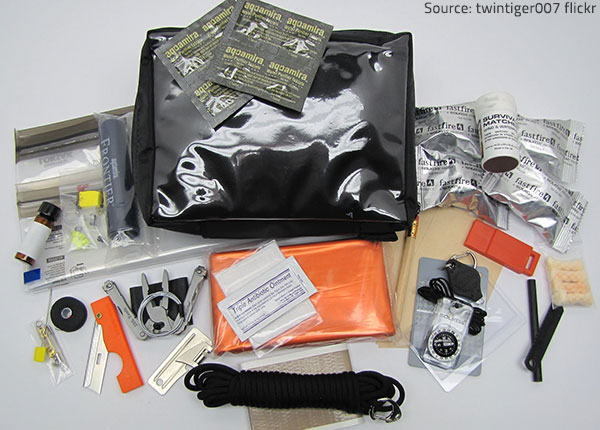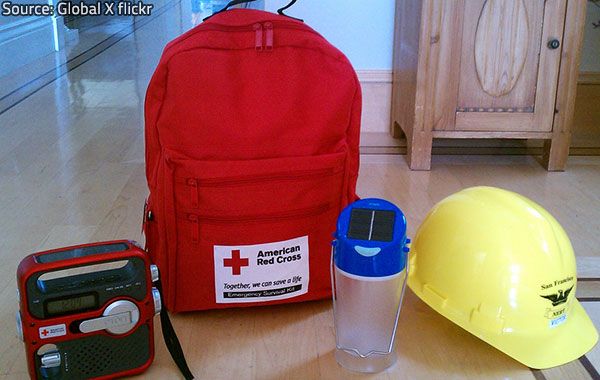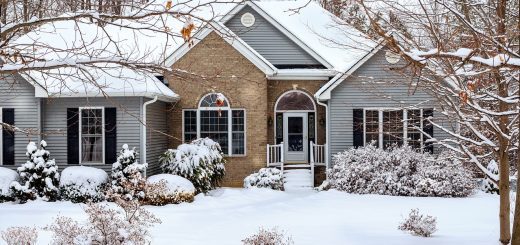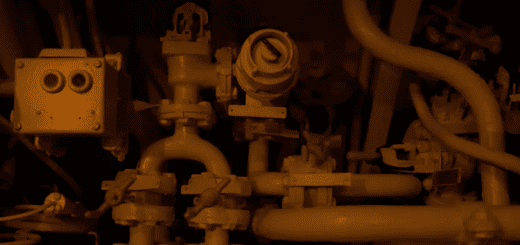What Should Your Emergency Supply Kit Contain?

The better prepared you are, the greater your chance of survival in the event of a disaster.
Your preparednessPreparedness is the state of being ready to respond to emerg... More level can mean the difference between life and death in the event of an emergency. To ensure your and your family’s survival under such perilous circumstances, you need an efficient disaster preparedness plan that will allow you to evacuate quickly, find adequate shelter, and last for a couple of days on your own. The more thought and effort you put into your survival plan, the greater your chance to stay safe and weather the storm.
Have in mind, though, that however elaborate your survival strategy may be, you won’t be able to hold out for long without proper supplies. Therefore, it is highly recommendable to prepare all the critical items you and your family will need to survive a disaster well in advance, pack them safely, and store them in a convenient place you can easily access at any time. This way, you will be able to take your essentials with you during an emergency evacuation and will have the means to manage on your own until help arrives. Just make sure your disaster preparednessPreparedness is the state of being ready to respond to emerg... More kit contains all the necessary emergency supplies.
What Should an Emergency Kit Include
What to put in an emergency kit? From survival food and first aid contents to important documents and small tools, your disaster supply kit should contain all the basics that will sustain your life for at least 72 hours after a disaster strikes.
Food and Water
It is essential for your survival to have ample food and water in the post-emergency period. Therefore, supplying sufficient amounts of food and water should be your top priority when building your survival kit. Make sure you have at least three days’ worth of food and water per family member. Bottled water and non-perishable foods are considered best for the purpose:

Your emergency survival kit should contain three to five days’ worth of food and water for all your family members.
- Canned meats, fruits and vegetables (just don’t forget that you will need a manual can opener as well);
- Nuts, cereal bars, crackers, and other healthy snacks that have a long shelf life;
- Dried meats (such as beef jerky) and dried fruits;
- Jars of peanut butter, jam, jelly, and other high energy foods;
- Baby formula (as well as adequate bottles), foods for infants, and specialized foods for people on medical diets (if applicable);
- One gallon of water per person per day. You may need larger amounts if you live in a hot climate, have young children, or a member of your family is ill.
Make sure the food items you include in your emergency survival kit are compact and lightweight and require little or no preparationPreparation is the steps taken to ready a property, equipmen... More. Store them in pest-proof plastic or metal containers and keep them in a cool, dry place.
First Aid Supplies
It is of paramount importance to have a first aid kit in the event of an emergency. It should contain:
- Hypoallergenic adhesive bandage and sterile gauze pads;
- Sterile bandages and dressings;
- Antiseptic lotion;
- Antibacterial wipes;
- Prescription medications (and prescription information);

A well stocked first aid kit can literally save your life in a state of emergency.
- Pain relievers;
- Fever reducers;
- Burn ointment;
- Eye wash;
- Stomach analgesics;
- Allergy meds;
- Sunscreen;
- Tube of petroleum jelly or any other similar lubricant;
- Thermometer;
- Scissors;
- Tweezers;
- Two pairs of sterile gloves;
- Glasses, contact lenses, hearing aids and other specialized medical supplies (if needed).
Sanitation and Hygiene Supplies
Make sure you include some basic hygiene supplies in your emergency preparednessPreparedness is the state of being ready to respond to emerg... More kit:
- Moist towelettes;
- Soap;
- Shampoo;
- Toothpaste and toothbrush;
- Paper towels;
- Toilet paper;
- Garbage bags;
- Baby diapers (if applicable).
Important Documents
Losing your important documents in a disaster will result in plenty of wasted time and various troubles down the road. Getting new papers may take really long and will certainly cause you many headaches in the meantime as:
– You may need to identify yourself and your family immediately after the disaster;
– You may have to deal with different institutions and organizations in the post-emergency period but doing so will be extremely difficult without the necessary paperwork;
– You won’t be able to start the disaster restoration process without the required documents.
That’s why it is critical to have duplicates and backups of all your important documents:
- Personal documents – birth certificates, passports, driver’s licenses, social security cards, marriage certificates, diplomas, etc.;
- Home deed and other property records;
- Financial documents – banking information, investment papers, tax records;
- Insurance papers;
- Medical records.

Find an efficient way to keep your documents safe from disasters.
You are advised to make certified copies of all these essential documents and keep one set in your emergency preparednessPreparedness is the state of being ready to respond to emerg... More kit. You can find more information on how to protect your documents from a disaster here.
Good to remember: Have in mind that your homeowner’s insuranceHomeowner’s insurance is a policy that provides financial ... More policy does not provide coverage for all types of disasters. Review your existing policy and consider purchasing additional insurance in order to maximize your coverage if necessary.
Clothing and Bedding
It may take long before you can return to your home after a disaster, so it is a good idea to have adequate bedding and clothing items included in your survival kit as well:
- A change of clothes for each family member – it is recommendable to store the extra clothes in a plastic bag in order to protect them from moisture, dirt and dust;
- Warm clothes (including jackets, hats, and gloves);
- Sturdy shoes or boots;
- Protective goggles and work gloves;
- Dust masks to help filter contaminated air;
- Helmets or hard hats to provide protection from falling debris;
- A sleeping bag and warm blanket for each person;
- Tent and tarp.
Tools

Make sure you include all the basic survival tools in your emergency kit.
Various small tools will come very handy in the aftermath of an emergency:
- Wind-up or battery-operated flashlights and lanterns;
- Wind-up or battery-powered weather radio;
- Extra batteries;
- Whistle to signal for help;
- Swiss army knife;
- Hammer;
- Wrench or pliers;
- Duct tape and plastic sheeting;
- NylonNylon is a synthetic polymer used in textiles, carpets, and ... More rope and plastic ties;
- Matches in a waterproof box.
It is also highly recommended to keep a spare cell-phone with its charger (or a solar charger, if possible) in your emergency kit, in case your phone gets damaged during the evacuation or runs out of battery.
Other Useful Items
When packing an emergency kit, consider including the following items as well:
- Games, books, toys and other kids’ items;
- Specialized baby items (if applicable);
- Pet items (in case you have pets, of course) – adequate pet food, extra water, food and water containers, medications, photocopies of medical records, disposable litter trays and garbage bags, pet toys, a traveling bag, crate or carrier for each of your animal friends, as well as an extra leash or harness if you have a dog, etc.;
- Disposable eating utensils, plates and cups;
- Maps of the local area;
- Compass;
- Portable fire extinguisher;
- Extra cash;
- A set of extra keys for your home and for your car.
Last but not least – make sure you have a paper list of emergency phone numbers and contact information (friends and relatives, medical facilities, family physician, insurance company, etc.)
You can use the above survival kit list for guidance when packing your own survival bag, but keep in mind that your emergency kit should be customized to meet your and your family members’ specific needs.
Emergency Kit Tips
Here are a few essential tips to take into account when making an emergency survival kit:

Is your own grab-and-go survival bag ready?
1) Keep your emergency preparednessPreparedness is the state of being ready to respond to emerg... More kit in a safe, convenient place;
2) Make sure all the members of your household know where to find the kit;
3) Store your emergency supplies in a sturdy, easy-to-carry container that is both fire- and waterproof;
4) Keep individual items in air-tight plastic bags;
5) Rotate your stored water supply and food items every six months, so that they stay fresh;
6) Replace medications approaching their expiration dates;
7) Replace batteries, sanitation materials, and hygiene items every year;
8) Don’t forget to re-evaluate your family needs (clothes, medicines, documents, etc.) from time to time and update your kit accordingly.
It may be a good idea to decide on a specific time of the year to check and update your emergency kit (before tornado season, for example). This way you’ll never forget to renew your survival supplies and will rest assured that you are properly prepared for an emergency.












